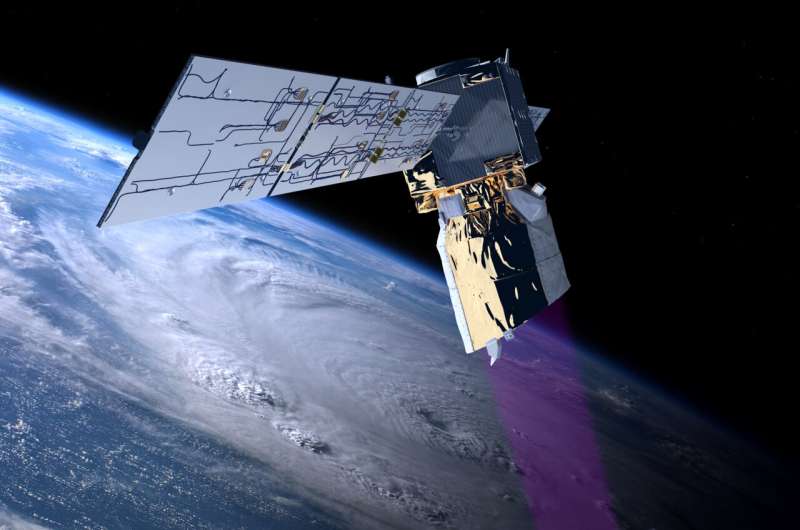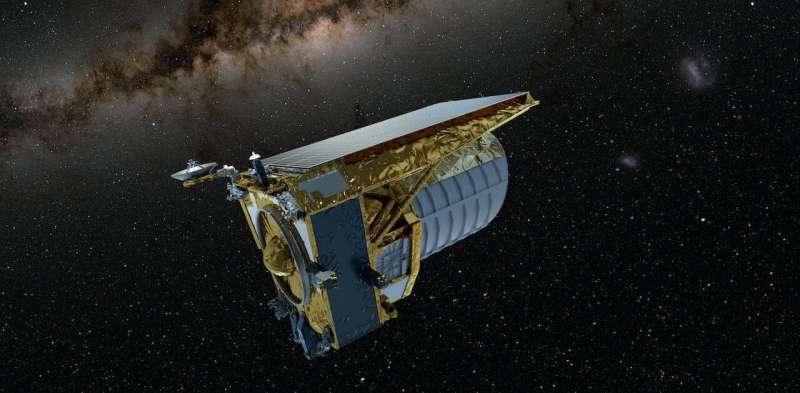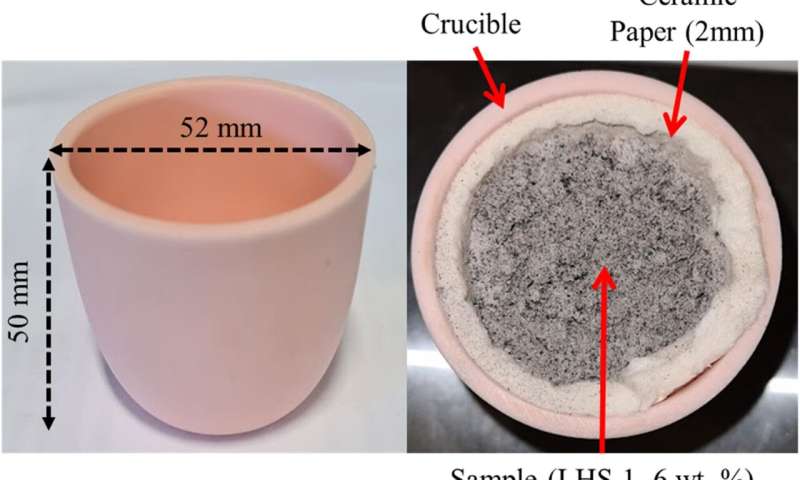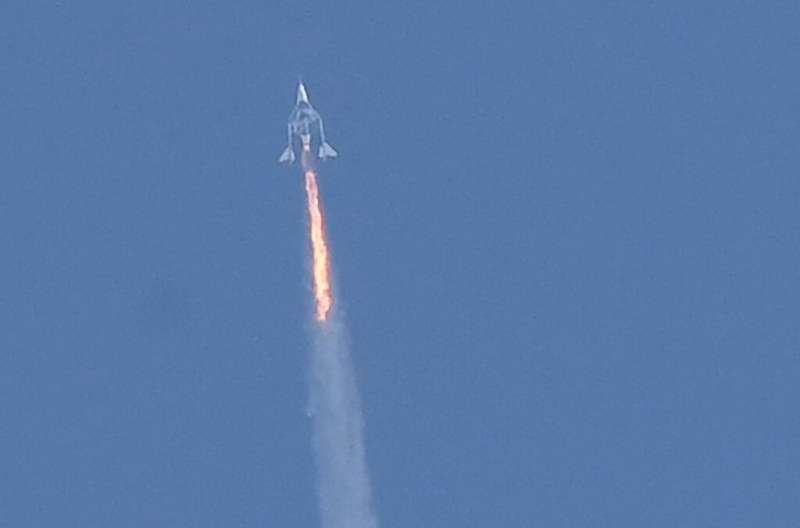
Copernical Team
SSTL and Oxford Space Systems to Launch CarbSAR in-orbit demo for innovative antenna
 Surrey Satellite Technology Ltd (SSTL) and Oxford Space Systems (OSS) have confirmed a partnership to build and launch an OSS Wrapped Rib antenna mounted to an SSTL CarbSAR satellite. The In Orbit Demonstration mission advances both companies' abilities, with OSS gaining space heritage, and SSTL building its ability to integrate capability from new suppliers.
The work has been jointly fund
Surrey Satellite Technology Ltd (SSTL) and Oxford Space Systems (OSS) have confirmed a partnership to build and launch an OSS Wrapped Rib antenna mounted to an SSTL CarbSAR satellite. The In Orbit Demonstration mission advances both companies' abilities, with OSS gaining space heritage, and SSTL building its ability to integrate capability from new suppliers.
The work has been jointly fund China's reusable experimental spacecraft successfully lands
 A reusable experimental spacecraft on Monday successfully returned to its scheduled landing site at the Jiuquan Satellite Launch Center in northwest China, marking an important milestone in the nation's quest for reusable space technology.
The spacecraft, which has not yet been officially named, completed a 276-day in-orbit operation before its successful landing. This achievement indicate
A reusable experimental spacecraft on Monday successfully returned to its scheduled landing site at the Jiuquan Satellite Launch Center in northwest China, marking an important milestone in the nation's quest for reusable space technology.
The spacecraft, which has not yet been officially named, completed a 276-day in-orbit operation before its successful landing. This achievement indicate Momentus achieves first orbit raise with pioneering propulsion system
 Momentus Inc. (NASDAQ: MNTS) has successfully achieved the first orbital raise of its Vigoride-5 spacecraft using its pioneering Microwave Electrothermal Thruster (MET) that uses distilled water as propellant.
The successful maneuvers raised the altitude of the Vigoride Orbital Service Vehicle (OSV) by more than 3 kilometers, taking into account the atmospheric drag that the spacecraft must ove
Momentus Inc. (NASDAQ: MNTS) has successfully achieved the first orbital raise of its Vigoride-5 spacecraft using its pioneering Microwave Electrothermal Thruster (MET) that uses distilled water as propellant.
The successful maneuvers raised the altitude of the Vigoride Orbital Service Vehicle (OSV) by more than 3 kilometers, taking into account the atmospheric drag that the spacecraft must ove Team Continues to Troubleshoot Propulsion for NASA's Lunar Flashlight
 NASA's Lunar Flashlight operations team continues to work on remedying the CubeSat's underperforming propulsion system. They developed a method to get one of the CubeSat's four thrusters to deliver more thrust; however, the small spacecraft will need additional, more consistent thrust in the next few days to reach its revised target orbit.
Devised by team members at NASA's Jet Propulsion L
NASA's Lunar Flashlight operations team continues to work on remedying the CubeSat's underperforming propulsion system. They developed a method to get one of the CubeSat's four thrusters to deliver more thrust; however, the small spacecraft will need additional, more consistent thrust in the next few days to reach its revised target orbit.
Devised by team members at NASA's Jet Propulsion L Aeolus' fiery demise to set standard for safe reentry

The Euclid spacecraft will transform how we view the 'dark universe'

The European Space Agency's (ESA) Euclid satellite completed the first part of its long journey into space on May 1, 2023, when it arrived in Florida on a boat from Italy. It is scheduled to lift off on a Falcon 9 rocket, built by SpaceX, from Cape Canaveral in early July.
Euclid is designed to provide us with a better understanding of the "mysterious" components of our universe, known as dark matter and dark energy.
Unlike the normal matter we experience here on Earth, dark matter neither reflects nor emits light. It binds galaxies together and is thought to make up about 80% of all the mass in the universe.
Thirsty on the moon? Just throw some regolith in the microwave

No matter where we go in the universe, we're going to need water. Thus far, human missions to Earth orbit and the moon have taken water with them. But while that works for short missions, it isn't practical in the long term. Water is heavy, and it would take far too much fuel to bring sufficient water to sustain long-term bases on the moon or Mars. So we'll have to use the water we can extract locally.
Fortunately, water is a common molecule in the universe. Even the moon has plenty of water to sustain a lunar colony. The only real challenge is how to extract it. As a recent study published in Acta Astronautica shows, that might be as easy as popping things into a microwave oven.
Although water is present in tiny quantities all over the moon, it is most concentrated in the polar regions.
Virgin to launch commercial spaceflights in June

Space tourism company Virgin Galactic announced Monday that it is resuming flights with a mission this month, its first in nearly two years, and the launch of commercial trips in June.
The Unity 25 mission will take place in late May with four company employees on board, said Virgin Galactic, which was founded by British billionaire Richard Branson, who took part in the firm's last spaceflight in July 2021.
"Unity 25 is the final assessment of the full spaceflight system and astronaut experience before commercial service opens in late June," Virgin Galactic said in a statement.
Unity 25 will be the company's fifth trip into space, defined as 50 miles (80 kilometers) above sea level.
Unlike other companies that use vertical-launch rockets, Virgin Galactic uses a carrier aircraft that takes off from a runway, gains high altitude, and drops a rocket-powered plane that soars into space before gliding back to Earth.
#CosmicMystery: Win a trip to Euclid mission control

Help us visualise how much of the Universe we know and don’t know and win a trip to mission control as ESA’s Euclid mission launches into space no earlier than July to unlock the mysteries of the Dark Universe.
Rocket Lab successfully launches 2 NASA storm-monitoring satellites
 U.S.-based Rocket Lab Electron successfully launched a pair of NASA storm-monitoring satellites from New Zealand on Monday.
The Rocket Like A Hurricane mission with two CubeSats on board launched shortly after 1 p.m. Monday from Rocket Lab Complex 1 on the Mahia Peninsula on the archipelago nation's east coast.
"After 36 launches, we're still not sick of this view," Rocket Lab sa
U.S.-based Rocket Lab Electron successfully launched a pair of NASA storm-monitoring satellites from New Zealand on Monday.
The Rocket Like A Hurricane mission with two CubeSats on board launched shortly after 1 p.m. Monday from Rocket Lab Complex 1 on the Mahia Peninsula on the archipelago nation's east coast.
"After 36 launches, we're still not sick of this view," Rocket Lab sa 